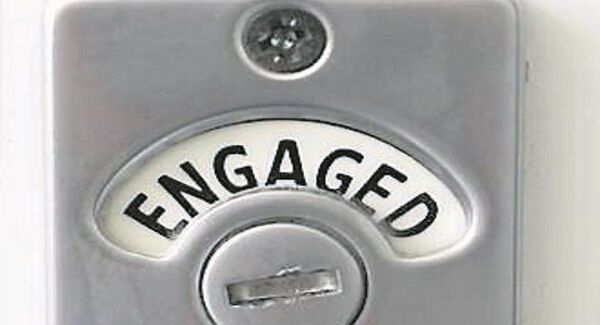New treatment proves there is nothing to stress about when it comes to incontinence

IT’S more than just an uncomfortable health condition — it’s an affliction which can affect your social life and curtail your fitness regime.
Traditionally women didn’t discuss it — after all, urinary incontinence does not make for scintillating dinner party conversation — but it seems the old stigma beginning to fade.
Many women took heart from the recent revelation by actress Kate Winslet, admitting she has suffered from urinary incontinence since having babies. “When you’ve had a few children you know, it’s just what happens,” she said on the Graham Norton Show last November. “It’s amazing, two sneezes, I’m fine. Three, it’s game over.”
Now a Cork consultant has introduced a new laser treatment for the condition which boasts a success rate of up to 90%.
A consultant obstetrician/gynaecologist for more than 20 years, Dr Barry O’Reilly has described the new trans-vaginal laser technology as “one of the most exciting advances I have seen in the field of stress incontinence in the past 15 years.”
Dr O’Reilly, who started providing the non-surgical, office-based treatment in Cork last autumn, says it’s currently being used primarily for stress urinary incontinence.
SUI, as it’s often referred to, is the urinary leakage experienced by one in three women after childbirth, and occurs during coughing, sneezing, exercising, dancing.
The cause for this involuntary loss of urine is the weakening of the urethral closure mechanism, which in turn results from reduced muscle tone in the pelvic floor region.
The main contributing factors are vaginal child birth, obesity, and ageing. Until now SUI was treated non-invasively through muscular training, known as Kegel exercises, which, says Dr O’Reilly “are only marginally effective” since they rely on daily compliance.
SUI is also treated invasively with a surgical implant known as a Urethral Sling. This procedure requires hospitalisation and recovery time.
The good news about the trans-vaginal laser treatment is that it is a walk-in, walk-out procedure which the patient undergoes on two occasions four weeks apart.
It’s also virtually painless, requiring no incisions, stitches, anaesthetic or antibiotics and has a success rate of up to 90%.
However, it’s so new it’s not yet covered here by health insurance policies — this could take years, believes Dr O’Reilly — or by the medical card system, and will set you back around €2,500.
“It’s about trying to bring incontinence to the fore,” says the Cork University Hospital medic.
He points out that many women are prepared to pay for aesthetic treatments.
“When it comes to personal health, incontinence is an affliction which impacts on every moment of your day,” he says.
We’re all relatively familiar with the use of laser technology, a light-based treatment which has been used in medicine in a number of areas for many years — for example, on ageing skin.
The use of laser technology on wrinkled skin encourages the growth of new blood vessels under the skin. This improves blood flow and collagen levels, in turn strengthening the tissue and creating elasticity.
An Erbium laser is used to treat urinary incontinence, says Dr O’Reilly, who adds that research is currently also under way into the efficacy of laser treatment of incontinence caused by an overactive bladder.
“The strength of the emitted beam is very important,” he says. “So the laser involved in this treatment is an Erbium laser, which provides the appropriate depth of penetration for vaginal remodelling.”
The laser probe is inserted into a speculum, a tool familiar to anyone who has had a smear test, and the laser beam is directed at the part of the vagina which is just over the neck of the bladder. The laser heats the collagen in the vaginal walls, stimulating the growth of new collagen.
This tightens the vaginal wall region, giving greater support to the bladder and, thus, the return of normal urination.
No recovery time is needed, adds Dr O’Reilly. Most patients notice an improvement within a week or two of receiving the treatment.
The laser treatment has also been found to be beneficial for women who experience vaginal laxity following childbirth, a condition which can have an impact on their sex lives.

New technology has its place but pelvic floor-exercises remain as crucial as ever, and not just for mothers, says
“Pelvic floor exercises are something all women should do. These routines exercise a group of muscles which are invisible and often we don’t do anything about,” he says.
Dr O’Reilly says delivering a baby can have a lasting impact on a woman’s pelvic area.
“Childbirth is believed to have the most important impact on the female pelvic floor.
“Other worsening factors include weight gain, heavy lifting, chronic coughing and constipation, all of which exacerbate the initial impact of childbirth on the pelvic floor muscles,” says DrO’Reilly.
“All women should do pelvic floor exercises from their 20s on, whether or not they have given birth, but particularly if they have given birth.
“These exercises are important because they help to prevent conditions like urinary incontinence or pelvic organ prolapse (pelvic organ prolapse when a woman’s bladder, uterus, or rectum falls down through the vaginal canal).
“Young women are very conscious of their appearance and general fitness and this is one other muscle group which is often overlooked. I believe attention should be drawn to it,” he says.
- For more information on adult urinary incontinence and on pelvic floor exercises see: http://goo.gl/RhvFFs










